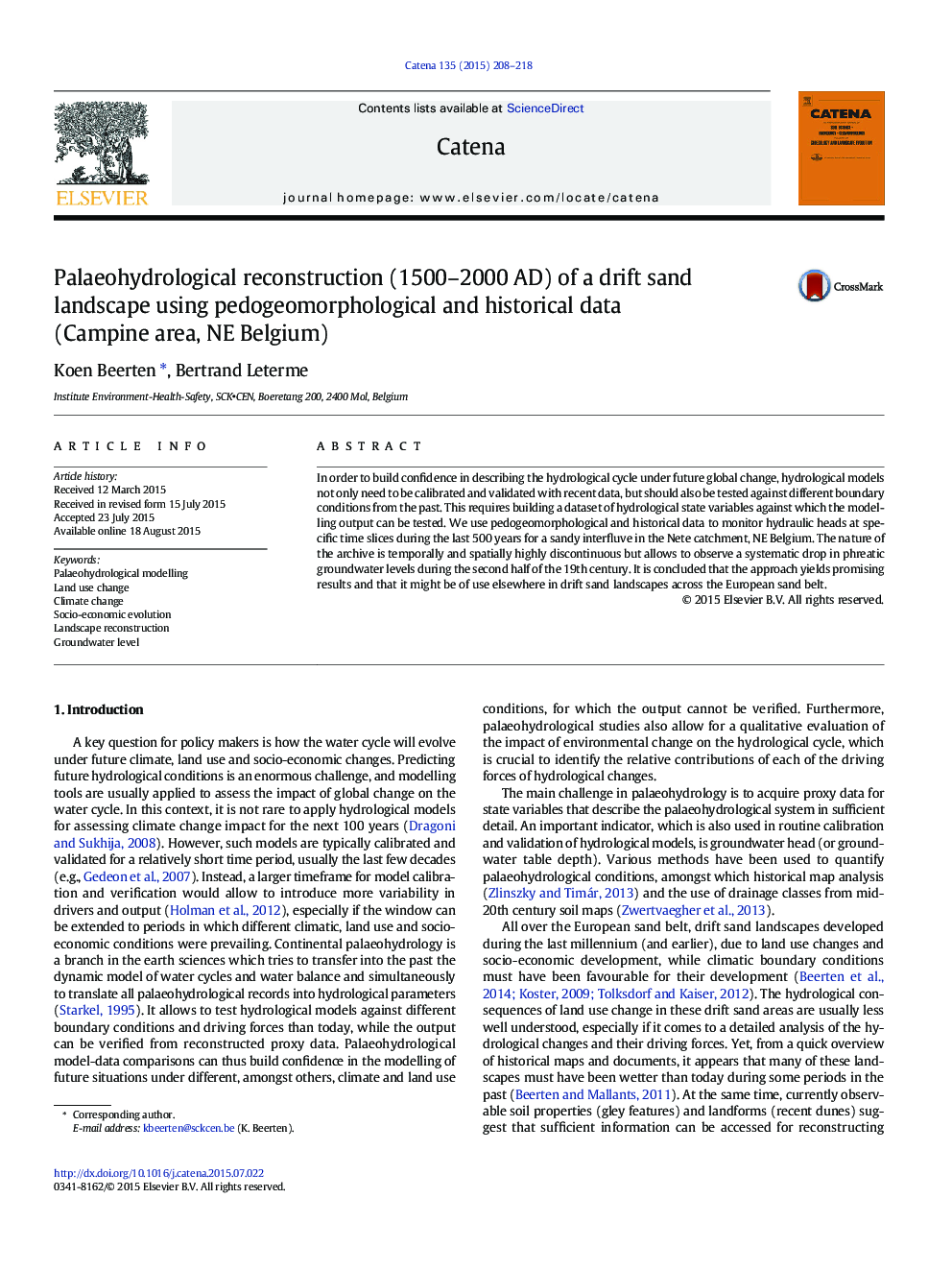| Article ID | Journal | Published Year | Pages | File Type |
|---|---|---|---|---|
| 4571093 | CATENA | 2015 | 11 Pages |
•Historical maps and pedogeomorphic data suggest that historical water table was higher than today.•Lowering of groundwater levels by up to 2 m is dated to the second half of the 19th century.•Vegetation and land use changes are seen as the major driving force.•Global warming and possibly population growth aided in keeping the levels low during the 20th century.
In order to build confidence in describing the hydrological cycle under future global change, hydrological models not only need to be calibrated and validated with recent data, but should also be tested against different boundary conditions from the past. This requires building a dataset of hydrological state variables against which the modelling output can be tested. We use pedogeomorphological and historical data to monitor hydraulic heads at specific time slices during the last 500 years for a sandy interfluve in the Nete catchment, NE Belgium. The nature of the archive is temporally and spatially highly discontinuous but allows to observe a systematic drop in phreatic groundwater levels during the second half of the 19th century. It is concluded that the approach yields promising results and that it might be of use elsewhere in drift sand landscapes across the European sand belt.
